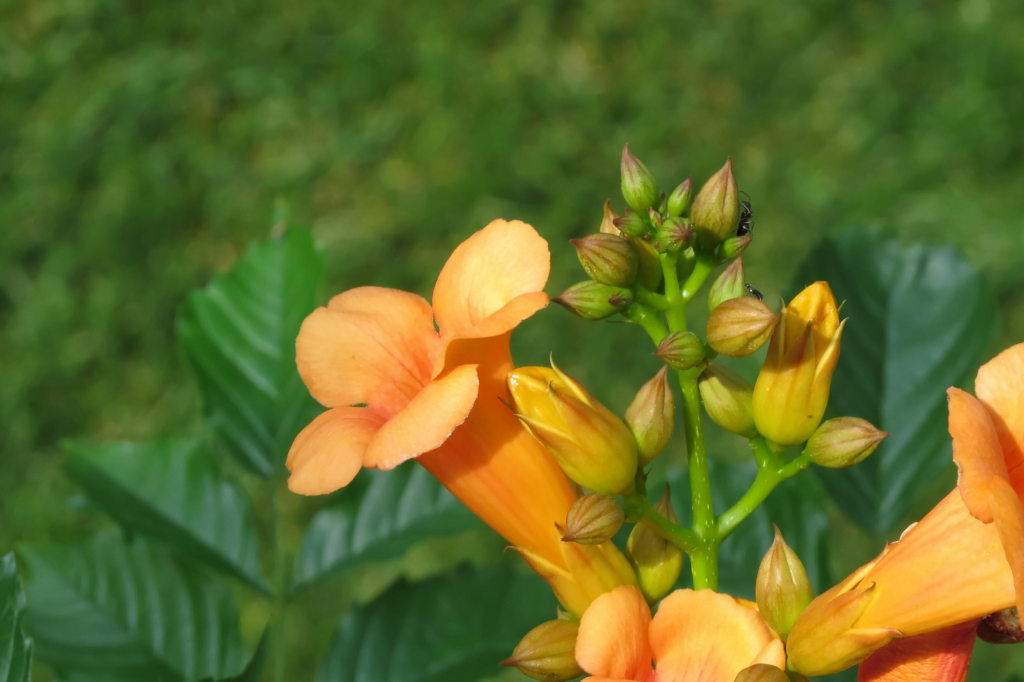- Trumpet vine is an invasive species that can be difficult to get rid of once it takes hold in your garden.
- Manual removal techniques involve hands-on methods such as cutting, digging, and pulling.
- Chemical control methods can be effective but should be used with caution and proper safety precautions.
- Early management and control of trumpet vine growth is crucial to preventing it from spreading and becoming more difficult to remove.
Understanding the Trumpet Vine Problem
Before you can effectively get rid of trumpet vines, it’s important to understand the nature of the problem. Trumpet vines are notoriously invasive and can quickly take over your garden if left unchecked. These hardy plants spread through both their roots and their seeds, making them difficult to control once established. Trumpet vines are known for their attractive flowers and ability to attract hummingbirds and other pollinators. However, their aggressive growth and extensive root system can cause damage to buildings, fences, and other structures if left uncontrolled.
Early management and control of trumpet vine growth is crucial to preventing their spread. Once established, they can quickly become a nuisance and a threat to other plants in your garden.
Trumpet vines are known for their attractive flowers and ability to attract hummingbirds and other pollinators. However, their aggressive growth and extensive root system can cause damage to buildings, fences, and other structures if left uncontrolled.
Early management and control of trumpet vine growth is crucial to preventing their spread. Once established, they can quickly become a nuisance and a threat to other plants in your garden.
Characteristics of Trumpet Vine
Trumpet vines, also known as Campsis radicans, are a deciduous woody vine native to the southeastern United States. They can grow up to 40 feet long and are known for their orange-red trumpet-shaped flowers, which bloom from June to September. Trumpet vines have a vigorous growth habit and can easily climb trees, buildings, and other structures. They have a thick, woody stem and numerous aerial roots that allow them to cling to surfaces.Impact of Trumpet Vine on Your Garden
While trumpet vines can be visually stunning and attract pollinators to your garden, their invasive tendencies can cause damage to other plants and structures. The extensive root system of trumpet vines can disrupt and choke out other plants, and their fast-growing stems can overtake trees and shrubs. Additionally, the aerial roots of trumpet vines can cling tightly to buildings and walls, causing damage to siding, bricks, and other materials.Management and Control of Trumpet Vines
As with many invasive plants, early management and control of trumpet vines is critical to preventing their spread. One effective method of control is to cut back the vines to ground level and dispose of the cuttings. This should be done before the plant has a chance to produce seeds. Manual removal, such as digging or pulling, can also be effective for small infestations. However, in cases of extensive growth, chemical control methods may be necessary. It’s important to note that herbicides specifically formulated for trumpet vine control should be used with caution and according to the manufacturer’s instructions to avoid harming other plants in your garden. Overall, effective management and control of trumpet vines requires diligence and consistent effort to prevent their spread and protect the health of your garden.Manual Removal Techniques
Manual removal is a great way to tackle trump vine infestations in your garden. Here are some effective techniques to try:| Technique | Instructions |
|---|---|
| Cutting | Use sharp pruning shears to cut the vine as close to the ground as possible. Dispose of the cuttings immediately to prevent regrowth. |
| Digging | Use a shovel to dig up the roots of the vine. Ensure that you remove all roots to prevent regrowth. |
| Pulling | Gently pull the vine from the ground, starting at the base. This technique can be effective if the vine is small and has not yet established deep roots. |
Chemical Control Methods
If manual removal alone is not sufficient, chemical control methods can be employed to effectively eliminate trumpet vines. Herbicides specifically formulated for trumpet vine control contain glyphosate or triclopyr, which are highly effective in killing the plant’s roots and preventing regrowth. When using herbicides, it is essential to follow the manufacturer’s instructions carefully. Wear protective clothing, including gloves, long sleeves, and pants, and avoid spraying on a windy day, as the chemicals can easily spread to nearby plants or areas. To apply herbicides, use a sprayer or a paintbrush to cover the trumpet vine’s leaves thoroughly. Depending on the size of the infestation, repeat the application weekly or monthly until the plant dies off completely.
If you prefer a more natural approach, consider using vinegar, salt, or boiling water to eliminate trumpet vine growth. These methods are not as effective as herbicides, but they are safer for the environment and do not pose a risk to other plants. Mix vinegar or salt with water and spray it directly on the trumpet vine’s leaves, or pour boiling water over the roots to kill the plant.
When using herbicides, it is essential to follow the manufacturer’s instructions carefully. Wear protective clothing, including gloves, long sleeves, and pants, and avoid spraying on a windy day, as the chemicals can easily spread to nearby plants or areas. To apply herbicides, use a sprayer or a paintbrush to cover the trumpet vine’s leaves thoroughly. Depending on the size of the infestation, repeat the application weekly or monthly until the plant dies off completely.
If you prefer a more natural approach, consider using vinegar, salt, or boiling water to eliminate trumpet vine growth. These methods are not as effective as herbicides, but they are safer for the environment and do not pose a risk to other plants. Mix vinegar or salt with water and spray it directly on the trumpet vine’s leaves, or pour boiling water over the roots to kill the plant.
Can Pruning Help in Getting Rid of Trumpet Vine?
Pruning trumpet vine for healthy growth is a key step in managing its vigorous growth and invasiveness. Regular pruning helps control its spread, prevents structural damage, and enhances flowering. However, it is essential to follow correct pruning techniques. Consult a professional arborist to ensure proper handling and to achieve desired results in managing and containing trumpet vine growth effectively.
What Are the Best Methods for Controlling Trumpet Vine?
To maintain a vibrant garden, it is crucial to employ effective methods to control trumpet vine. Regular pruning can help restrict its growth and prevent it from becoming invasive. Additionally, digging up the vine’s roots or applying herbicides selectively can help manage its spread.









